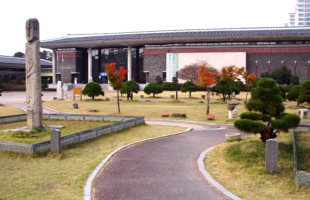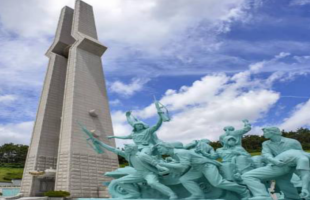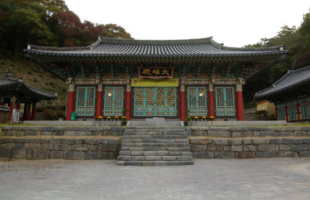Find all the best Museums and Heritage sites now with us….

 The Uijae Museum of Korean Art was established in memory of the famous Korean artist Heo Baekryeon. Construction of the museum ended in December, 1999, but the museum wasn’t officially opened until November 17th, 2001. Built to mimic the curve of a gently sloping road, the museum’s unique design earned architect Jo Seongryong the 10th Korean Architecture Award the same year as the museum’s opening. |
 The Gwangju Museum of Art was established on August 1st, 1992 and has been under the management of the Gwangju Biennale Committee ever since the opening of the Biennale Hall in 1995 and the incorporation of the Biennale Support Headquarters in 1996. On display at the museum are 560 pieces of artwork ranging from those by classic Korean artists like Heo Baekryeon, O Jiho, Yang Sua, and Im Jiksun to works by modern artists. |
 The Gwangju National Museum was established at Maegok-dong of Jeollanam-do on Dec. 6, 1978 after Korea’s liberation from Japan in 1945. Since its opening, it has contributed to the development of unique and regional culture consistently. It has a collection of more than 40,000 pieces and has Prehistoric Gallery, Sinan Marine Relics Gallery, Pottery Gallery, Buddhist Art Gallery, and Planned Display Gallery. |
 The Gwangju Folk Museum houses a collection of traditional Namdo and rare folk artifacts, portraying time-honored customs and lifestyles of this region. The first floor houses a material-culture exhibition room, depicting the traditional daily lives of Koreans, while the second floor houses a spiritual-culture room, exhibiting a “life” ceremony. |
 The 5·18 Memorial Park was established to remember the May 18 Democratization Movement. Covering an area of 204,985㎡, the park houses various historical and cultural facilities, including the 5·18 Library, 5·18 Cultural Center, Education Center, Daedong Plaza, Owoldae Tower, and other memorial sculpture and monuments. |
 Located on the western foothills of Mudeungsan Mountain, Jeungsimsa Temple is a representative temple of Gwangju. First founded by Buddhist monk Cheolgamseonsa Do Yun in 517 , the temple was remodeled by Buddhist monk Hyesoguksa in 1094 (Goryeo Dynasty) and again by Kim Bang in 1443 (Joseon Dynasty). |
 The May 18th National Cemetery, located in front of Mt. Mudeungsan, is the symbol of freedom and democracy and is the grave of victims during the contention for democracy in May 1980. Victims were carried and buried by handcarts and garbage trucks in 1980. In 1997 the cemetery was exhumed and reburied at this memorial. May 18th became a national holiday of commemorating our desire for democracy. |









